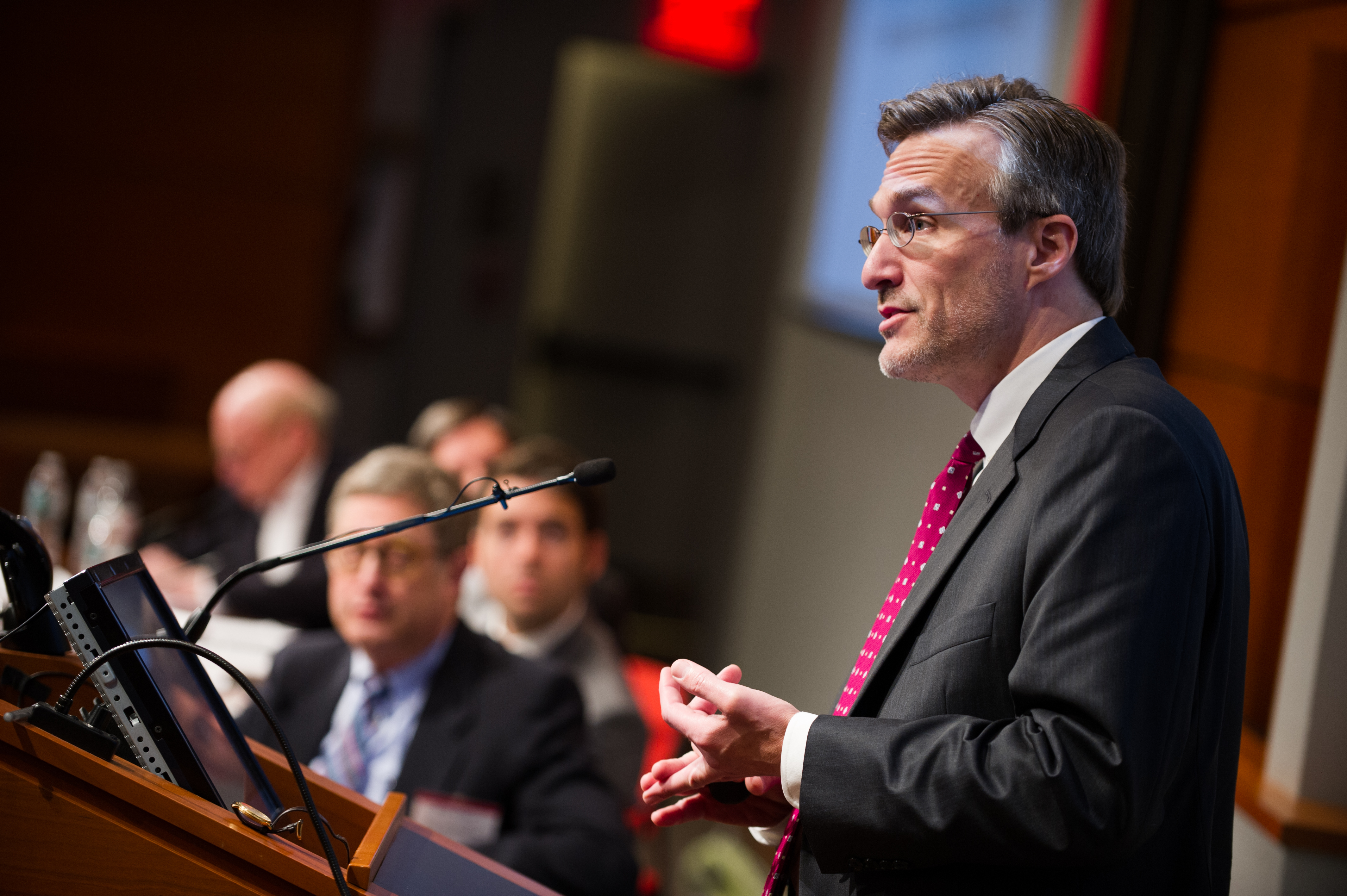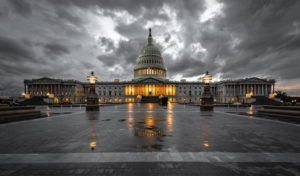
Cary Coglianese assesses doctrinal limits on distinctions between presidential oversight and decision-making.
President George Bush once declared, “I’m the decider, and I decide what’s best.” In a similar vein, President Barack Obama has stated, “I’ve got a pen to take executive actions where Congress won’t.” These declarations of presidential authority recently framed the discussion of an empirical study of separation of powers doctrine and governmental legitimacy presented at the University of Pennsylvania Law School by Cary Coglianese.
Coglianese, a professor at Penn Law and director of the Penn Program on Regulation, defined the scholarly debate over limits of presidential impact on administrative action as presenting a choice between a bright-line rule and a softer standard imposing murky limits on presidential influence on administrative agencies.
On the one hand, a bright-line rule would allow presidents to undertake otherwise lawful efforts to influence the work of administrative agencies, including commanding the heads of these agencies to follow presidential orders. On the other hand, a standards-like approach would rely on what has been described as a “subtle” distinction between permissible presidential oversight of agency actions and impermissible presidential decision-making — or what could be referred to as the “overseer-decider” standard.
To illustrate how the choice between these distinctions might affect public perceptions of the legal system, Coglianese presented empirical research he and his co-author Kristin Firth, a Penn Law student, have undertaken based on surveying members of the public.
Three of the surveys involved a hypothetical redesign of the $50 bill. Respondents were given a scenario involving a hypothetical statute that delegates authority to the Treasury Secretary to design currency. Since the overseer-decider standard depends on determining who makes an administrative decision, the first survey measured how well respondents could determine the ultimate decision-maker among a variety of executive and administrative officials, including the president. Ultimately, Coglianese explained, when the president became involved to any palpable degree, respondents tended to assume that the president made the decision.
They next measured accountability. Respondents were told that, following the currency’s redesign, local enforcement officials reacted either positively or negatively. The survey results showed that, generally speaking, respondents placed more blame on the president when things went wrong than they gave the president credit when things went right. Coglianese pointed to this result as empirical confirmation that non-legal political incentives — such as reputation and perception — help to constrain presidential meddling in the work of administrative agencies.
A third survey stipulated varying levels of agreement between the president and Treasury Secretary. It found that when the two parties disagreed, but the president tried to influence the Secretary, the president was perceived as the “decider.”
Coglianese’s and Firth’s final survey relied on a somewhat different scenario. Instead of designing currency, the Treasury Secretary was confronted with the question of whether to extend a compliance deadline for new regulations. After allegations that the president impermissibly pressured the Secretary to extend the deadline, respondents were told that a judge determined the president’s actions were legal. Then they were asked to evaluate the judge’s decision.
Respondents were, at random, also given one of three different statements of the applicable law. Coglianese explained that when respondents were given a standards-like statement, they reported diminished respect for the law — whereas the rule-like positions tested did not. In other words, where the legality of presidential involvement was not clearly defined, respondents ended up questioning the court’s legitimacy.
Commentator Mark Tushnet, a Professor of Law at Harvard Law School, remarked that the four scenarios did not address controversial or disputed topics, and thus might not mimic actual public reaction to real-world presidential action, which is likely to involve more contentious policy issues.
Coglianese acknowledged that introducing sensitive scenarios — such as substantive decisions or politically volatile parties — could indeed affect public perceptions. However, he explained that they were excluded intentionally because introducing controversial political factors would likely overwhelm public opinion, precluding empirical precision in discerning the effects of legal doctrine.
Coglianese concluded that the data show that adopting the “overseer-decider” standard can negatively impact public perceptions of legal legitimacy.
Rogers Smith, the Christopher H. Browne Distinguished Professor of Political Science and Associate Dean for Social Sciences at the University of Pennsylvania, moderated the panel.
This essay is part of The Regulatory Review’s ten-part series, The Bounds of Executive Discretion in the Regulatory State.
The recent Symposium was co-sponsored by the Penn Program on Regulation (PPR) and organized by Penn Law professors Cary Coglianese, director of PPR, and Christopher Yoo.



